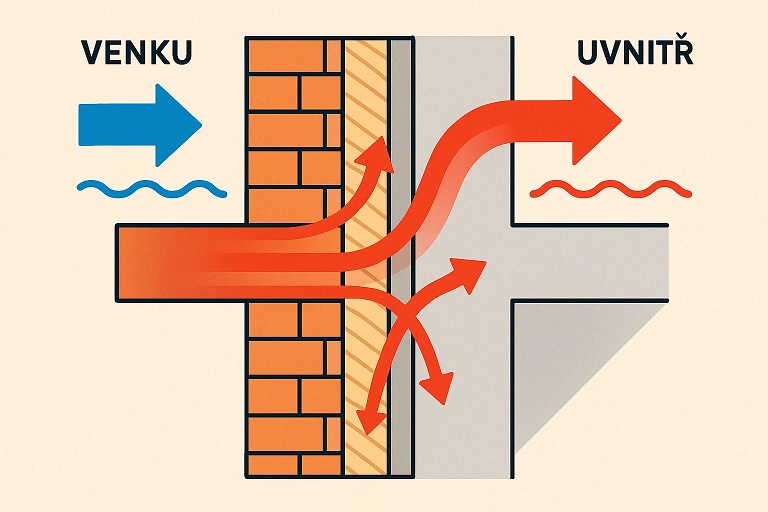How do thermal bridges form, and how can they be prevented?
Ivan Landa
Almost everyone who has ever dealt with building or renovating a house has sooner or later come across the term "thermal bridge". It may sound like something from physics class at first, but in practice it means a very specific problem, which is heat loss from the house, increased heating costs and, in the worst case, the formation of mold. Therefore, in this article we will look at how thermal bridges are created, what their consequences are and, most importantly, how to effectively prevent them at the design and construction stages.
What is a thermal bridge?
A thermal bridge is a place in the structure of a building where heat transmission is significantly higher than in its surroundings. In layman's terms - heat escapes through this and cold gets inside. This happens either due to faulty design of the building, insufficient or poor-quality insulation, or due to poor execution of details during the construction itself.
Typical places where thermal bridges occur are:
- wall and ceiling connections,
- window and door frames,
- balconies and loggias,
- lintels above windows,
- foundations and connections to floors.
How do thermal bridges occur?
Thermal bridges can be structural, geometric or material. Structural bridges occur where a continuous layer of thermal insulation is interrupted, for example by a metal anchor, reinforced concrete collar or other element with high thermal conductivity. Geometric bridges appear in places where the shape of the structure changes - typically in corners or connections. Material bridges occur where different building materials with different thermal insulation properties are used next to each other.
The most common culprit is insufficient insulation of details or its complete absence. A few centimeters of missing insulation material are enough and the place that should protect you from the cold turns into a "freezer".
How do you know that you have a thermal bridge?
In practice, a thermal bridge often reveals itself. In winter, you can feel cold on the inside of the wall, the windows are dewy, damp spots or even mold form on the plaster. In extreme cases, the building material can degrade. If you are not sure, you can have a thermal imaging measurement done. Thanks to an infrared camera, you can see exactly where your heat is escaping.
How to remove thermal bridges, and especially how to prevent them?
Prevention is essential, i.e. correct construction design, high-quality execution of all details and appropriately selected insulation material. Make sure that the insulation forms a continuous and uninterrupted layer around the entire envelope of the house.
What helps:
- use of highly efficient insulation panels (e.g. PIR/PUR panels)
- thoughtful solution of details, especially the connection of windows, doors and corners
- elimination of metal elements in the structure, or their interruption with insulation elements
- professional supervision during the implementation of the construction or insulation
- use of system solutions that prevent the formation of bridges already in the design phase
As we have already written, thermal bridges reduce thermal comfort in the house, increase heating costs and in extreme cases can endanger your health due to moisture and mold. You can prevent them relatively easily, all you need is the right design, quality materials and consistent implementation.
At our company ISOparts, we specialize in Purenit insulating concealed building elements. We use close cooperation and the excellent properties of the materials of PUREN Gmbh to provide you with products that will help you effectively solve otherwise challenging details in places where thermal bridges often form.
Are you planning a construction or renovation project and need advice on the quantity and parameters of purenit for your needs? Contact us, we are experts in purenit.

 cs - Český jazyk
cs - Český jazyk



